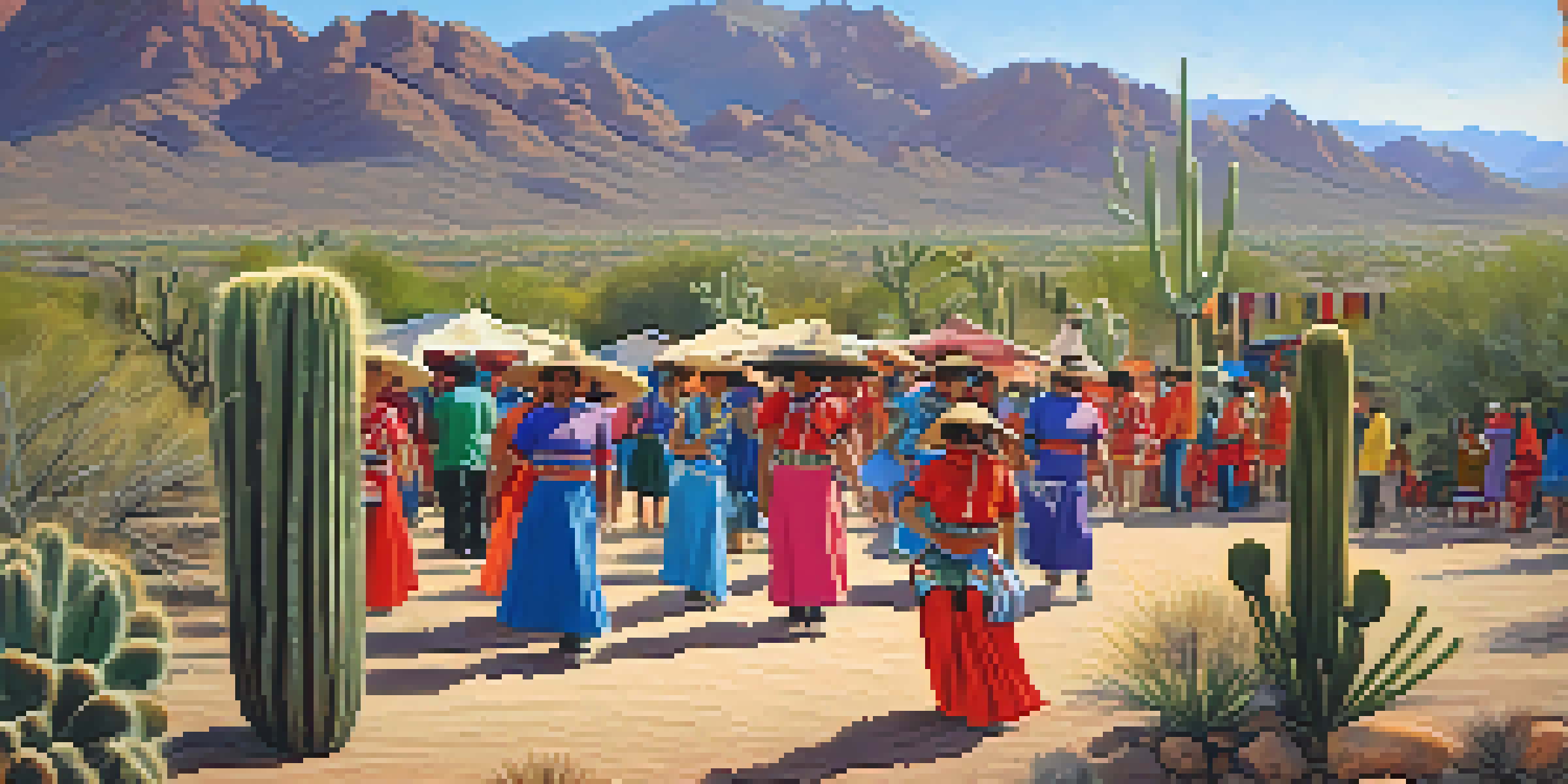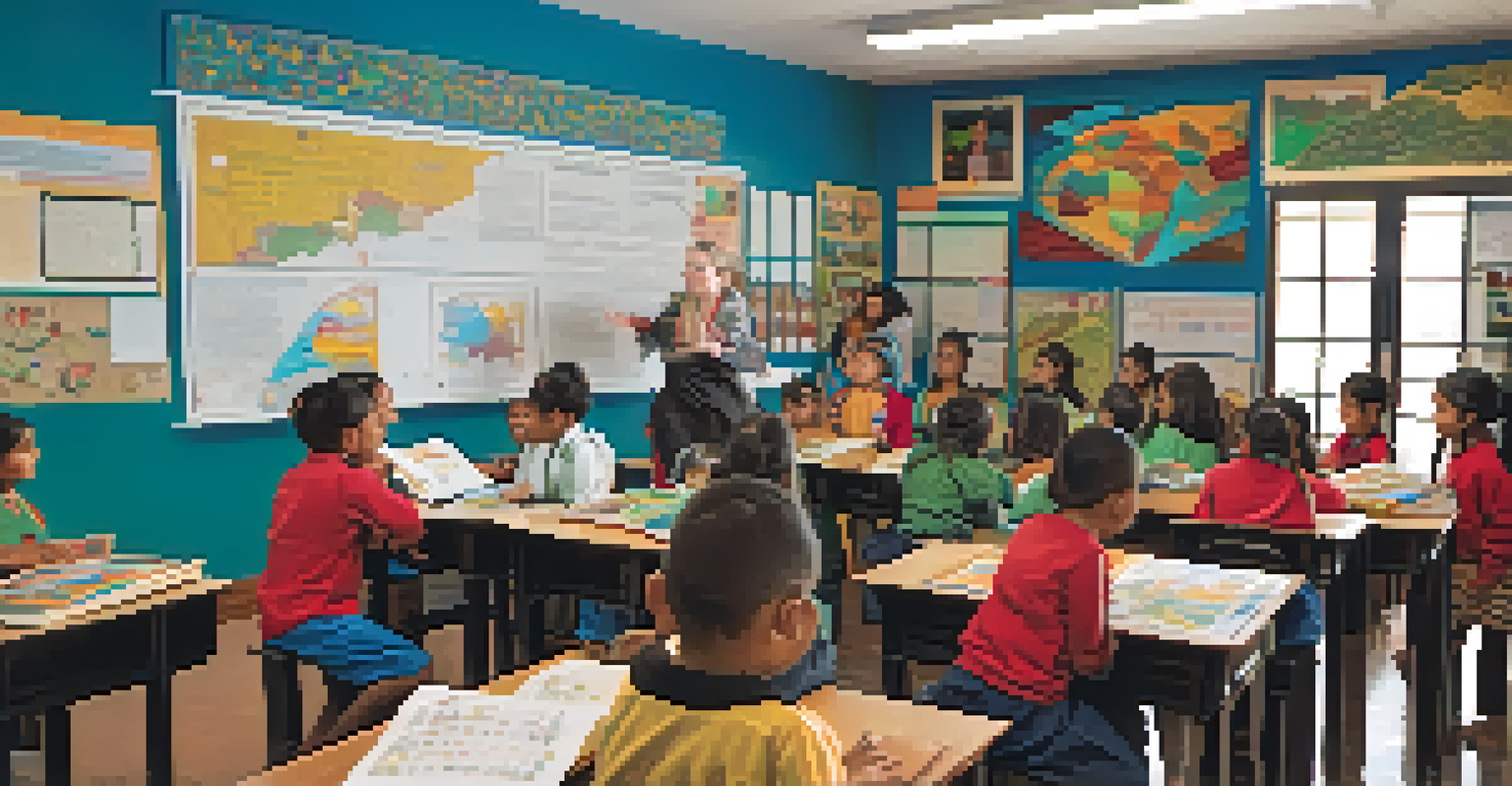Exploring Indigenous Languages in Tucson: A Cultural Overview

Understanding the Importance of Indigenous Languages
Indigenous languages are not just a means of communication; they are vital carriers of culture, history, and identity. Each language encapsulates unique worldviews and traditions, enriching our understanding of human experience. In Tucson, these languages are a testament to the resilience and creativity of Native communities who have preserved them over generations.
Languages are not just a means of communication; they are also a window into a culture's history and identity.
When we explore Indigenous languages, we also explore the stories and knowledge that have been passed down through time. These languages often contain ecological wisdom, social structures, and spiritual beliefs that are integral to the cultures they represent. For instance, the Tohono O'odham language offers insights into the region's flora and fauna, showcasing a deep connection to the land.
Preserving Indigenous languages is crucial, as many are endangered. Efforts to revitalize these languages not only help maintain cultural identity but also promote diversity in our global society. By learning about and supporting these languages, we contribute to a richer, more inclusive narrative.
A Brief History of Indigenous Languages in Tucson
Tucson, located in the heart of the Sonoran Desert, is home to several Indigenous communities, including the Tohono O'odham and Pascua Yaqui tribes. The historical context of these languages dates back thousands of years, with each tribe developing its own linguistic roots and cultural practices. The arrival of European settlers drastically impacted these communities, leading to language suppression and cultural shifts.

Despite these challenges, many Indigenous languages have endured. The Tohono O'odham language, for instance, has seen revitalization efforts in recent decades, with community members actively teaching it to younger generations. This historical resilience demonstrates the strength of Indigenous cultures in the face of adversity.
Indigenous Languages as Cultural Pillars
Indigenous languages carry essential cultural, historical, and ecological knowledge, serving as vital links to identity and community heritage.
Understanding this history allows us to appreciate the depth of Indigenous languages in Tucson. It also highlights the ongoing efforts to reclaim and celebrate these languages, showing how they are intertwined with the community's identity and heritage.
The Role of Language in Cultural Identity
Language is a powerful tool for expressing cultural identity, shaping how individuals perceive themselves and their communities. For Indigenous peoples in Tucson, their languages serve as a bridge connecting them to their ancestors and traditions. Speaking and preserving these languages fosters a sense of belonging and pride among community members.
The loss of a language is the loss of a culture that has existed for thousands of years.
When individuals engage with their Indigenous language, they often find a deeper understanding of their cultural heritage. Expressions, idioms, and stories embedded in these languages carry lessons and values that are essential to the community's way of life. For example, traditional stories told in Tohono O'odham provide moral guidance and historical context that resonate with present-day experiences.
Moreover, the revitalization of Indigenous languages can strengthen community bonds. Language workshops and cultural events encourage intergenerational dialogue, allowing elders to share knowledge with youth. This exchange not only preserves the language but also nurtures a vibrant cultural ecosystem.
Education and Language Revitalization Initiatives
In Tucson, various educational initiatives are underway to promote Indigenous languages and cultures. Schools within the Tohono O'odham Nation and Pascua Yaqui Tribe incorporate language lessons into their curricula, providing students with the tools to connect with their heritage. These programs are invaluable in nurturing a new generation of speakers.
Community organizations also play a pivotal role in language revitalization. Workshops, language camps, and cultural events create opportunities for people of all ages to engage with their languages. Such initiatives foster a sense of community and encourage active participation in preserving linguistic heritage.
Revitalization Efforts Are Essential
Educational initiatives and community programs in Tucson aim to revitalize Indigenous languages, ensuring they are taught and spoken by future generations.
Furthermore, digital platforms and resources are emerging to support language learning. Apps and online courses enable individuals to practice Indigenous languages at their own pace, making learning accessible to a wider audience. This blend of traditional and modern approaches is vital for the survival of Indigenous languages in an increasingly globalized world.
Challenges Facing Indigenous Languages Today
While the resurgence of Indigenous languages in Tucson is promising, several challenges remain. One significant hurdle is the generational gap; many younger community members may not have the opportunity to learn their ancestral languages at home. This disconnection can lead to a decline in fluency and cultural transmission.
Additionally, societal pressures often prioritize dominant languages, which can make Indigenous languages feel less relevant. As a result, some individuals may choose to speak English or Spanish, inadvertently contributing to the erosion of their linguistic heritage. This phenomenon is not unique to Tucson but is seen across many Indigenous communities worldwide.
Addressing these challenges requires collective effort and commitment. Community leaders, educators, and families must work together to create supportive environments where Indigenous languages can thrive. By fostering pride in linguistic heritage, they can inspire the next generation to embrace their identity fully.
Celebrating Indigenous Languages Through Art and Expression
Art plays a crucial role in celebrating and preserving Indigenous languages and cultures. In Tucson, numerous artists use their craft to weave stories and traditions into visual art, music, and performance. This creative expression not only showcases the beauty of Indigenous languages but also makes them accessible to a broader audience.
For instance, local musicians may incorporate Indigenous languages into their songs, resonating with both Indigenous and non-Indigenous communities. These artistic endeavors create a platform for dialogue and understanding, allowing people to appreciate the richness of Indigenous cultures. Events like the Tucson Meet Yourself festival highlight this cultural fusion, featuring performances and workshops that celebrate linguistic diversity.
Art and Expression Celebrate Languages
Artistic endeavors in Tucson incorporate Indigenous languages, creating platforms for cultural exchange and showcasing the richness of these traditions.
Moreover, storytelling remains a powerful means of cultural expression. Traditional stories told in Indigenous languages can captivate audiences while providing insights into the community's values and beliefs. This blend of art and language fosters cultural pride and encourages a deeper connection to heritage.
The Future of Indigenous Languages in Tucson
Looking ahead, the future of Indigenous languages in Tucson is filled with potential. As awareness grows about the importance of linguistic diversity, more people are beginning to value Indigenous languages as vital components of cultural heritage. This shift in perspective can lead to increased support for revitalization efforts and educational programs.
Collaboration among community members, educators, and institutions will be key in sustaining these efforts. By sharing resources and knowledge, stakeholders can create a robust framework to ensure that Indigenous languages continue to be spoken and taught. Engaging youth in these processes will be particularly important, as they represent the future of these languages.

Ultimately, the survival of Indigenous languages in Tucson depends on collective action and commitment. With a shared vision for revitalization and cultural preservation, communities can cultivate environments where their languages flourish, enriching not only their own identities but also the broader tapestry of human expression.